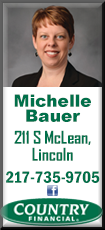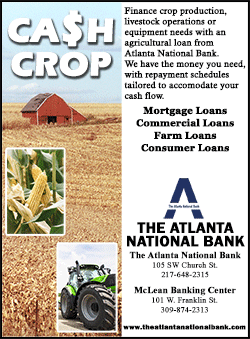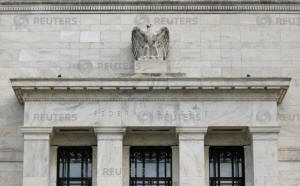Fed nods to concerns but still sees U.S. rate hikes
 Send a link to a friend
Send a link to a friend
 [November 17, 2018]
By Ann Saphir [November 17, 2018]
By Ann Saphir
(Reuters) - Federal Reserve policymakers on
Friday signaled further interest rate increases ahead, even as they
raised relatively muted concerns over a potential global slowdown that
has markets betting heavily that the rate-hike cycle will soon peter
out.
The widening chasm between market expectations and the interest-rate
path the Fed laid out just two months ago underscores the biggest
question facing U.S. central bankers: How much weight to give a growing
number of potential red flags, even as robust U.S. economic growth
continues to push down unemployment and create jobs?
"We are at a point now where we really need to be especially data
dependent," Richard Clarida, the Fed's newly appointed vice chair, said
in a CNBC interview. "I think certainly where the economy is today, and
the Fed's projection of where it's going, that being at neutral would
make sense," he added, defining "neutral" as the policy rate somewhere
between 2.5 percent and 3.5 percent.
Such a range implies anywhere from two to six more rate hikes, and
Clarida declined to say how many he would prefer.

He did say he is optimistic that U.S. productivity is rising, a view
that suggests he would not see faster economic or wage growth as
necessarily feeding into higher inflation or, necessarily, requiring
tighter policy. But he also sounded a mild warning.
"There is some evidence of global slowing," Clarida said. "That's
something that is going to be relevant as I think about the outlook for
the U.S. economy, because it impacts big parts of the economy through
trade and through capital markets and the like."
Federal Reserve Bank of Dallas President Robert Kaplan, in a separate
interview with Fox Business, also said he is seeing a growth slowdown in
Europe and China.
"It's my own judgment that global growth is going to be a little bit of
a headwind, and it may spill over to the United States," Kaplan said.
The Fed raised interest rates three times this year and is expected to
raise its target again next month, to a range of 2.25 percent to 2.5
percent. As of September, Fed policymakers expected to need to increase
rates three more times next year, a view they will update next month.

Over the last week, betting in contracts tied to the Fed's policy
suggests that even two rate hikes might be a stretch. The yield on fed
fund futures maturing in January 2020, seen by some as an end-point for
the Fed's current rate-hike cycle, dropped sharply to just 2.76 percent
over six trading days.
[to top of second column] |

The Federal Reserve building is pictured in Washington, DC, U.S.,
August 22, 2018. REUTERS/Chris Wattie/File Photo/File Photo/File
Photo/File Photo

At the same time, long-term inflation expectations have been dropping quickly as
well. The so-called breakeven inflation rate on Treasury Inflation Protected
Securities, or TIPS, has fallen sharply in the last month. The breakeven rate on
five-year TIPS <US5YTIP=RR> hit the lowest since late 2017 earlier this week.
Those market moves together suggest traders are taking the prospect of a
slowdown seriously, limiting how far the Fed will end up raising rates.
In an interview with the Wall Street Journal, Philadelphia Fed chief Patrick
Harker also sounded a skeptical note.
"At this point I'm not convinced a December rate move is the right move," he was
quoted as saying, citing muted inflation readings.
But not all policymakers seemed that worried.
Sitting with his back to a map of the world in a ballroom in Chicago's Waldorf
Astoria Hotel, Chicago Fed President Charles Evans downplayed risks to his
outlook, noting that the leveraged loans that some of his colleagues have raised
concerns about are being taken out by "big boys and girls" who understand the
risks.
He told reporters he still believes rates should rise to about 3.25 percent so
as to mildly restrain growth and bring unemployment, now at 3.7 percent, back up
to a more sustainable level.
Asked about risks from the global slowdown, he said he hears more talk about it
but that it is not really in the numbers yet. But the next six months, he said,
bear close watching.

"There's not a great headline" about risks to the economy right now, Evans told
reporters. "International is a little slower; Brexit – nobody's asked me about
that, thank you; (the slowing) housing market: I think all of those are in the
mix for uncertainties that everybody's facing," he said.
"But at the moment, it's not enough to upset or adjust the trajectory that I
have in mind."
Still, Evans added, the risks should not be counted out: "They could take on
more life more easily because they are sort of more top of mind, if not in the
forecast."
(Reporting by Ann Saphir; Additional reporting by Jonathan Spicer; Editing by
Dan Grebler and James Dalgleish)
[© 2018 Thomson Reuters. All rights
reserved.] Copyright 2018 Reuters. All rights reserved. This material may not be published,
broadcast, rewritten or redistributed.
Thompson Reuters is solely responsible for this content. |